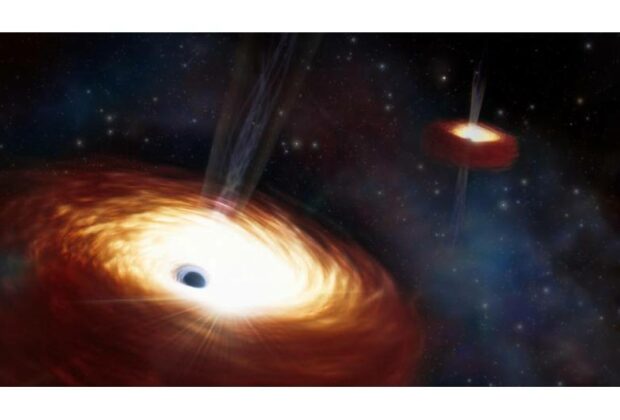Scientists have detected the closest confirmed pair of supermassive black holes ever observed, located just 300 light-years apart. This extraordinary discovery was made using NASA’s Hubble Space Telescope and the Chandra X-ray Observatory.
The black holes reside in the galaxy MCG-03-34-64, about 800 million light-years from Earth. Both black holes are actively consuming gas and dust, a process that makes them shine brightly as active galactic nuclei (AGN), detectable across multiple wavelengths of light.
Black holes are regions of space where gravity is so intense that nothing, not even light, can escape. They form when massive stars collapse under their own gravity, creating a point of infinite density known as a singularity, surrounded by an event horizon.
This AGN pair is the closest of its kind discovered in the local universe.
Anna Trindade Falcão, the lead researcher from the Center for Astrophysics, Harvard & Smithsonian, expressed surprise at the discovery, which was made by chance. NASA explained that AGN binaries were likely more common in the early universe when galaxy mergers were frequent. This find offers a unique, close-up glimpse of a nearby example of this cosmic phenomenon.
Hubble’s high-resolution imaging revealed unusual diffraction spikes, indicating a region of concentrated glowing oxygen gas. Chandra’s X-ray data further confirmed the presence of two strong sources of high-energy emissions, confirming the existence of the two supermassive black holes.
This discovery provides astronomers with a rare opportunity to study closely interacting supermassive black holes. The two black holes will continue their spiral journey and are predicted to merge in around 100 million years. When that happens, they will generate gravitational waves—ripples in spacetime—that future observatories like the planned Laser Interferometer Space Antenna (LISA) could detect.
The discovery underscores the importance of multi-wavelength astronomy and highlights the crucial role that long-serving space telescopes like Hubble and Chandra continue to play in expanding our understanding of the universe.








